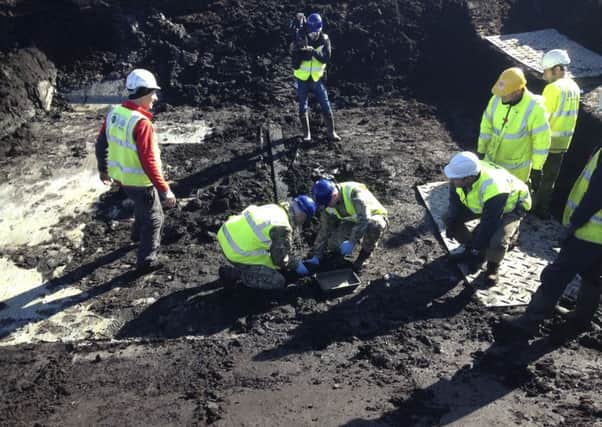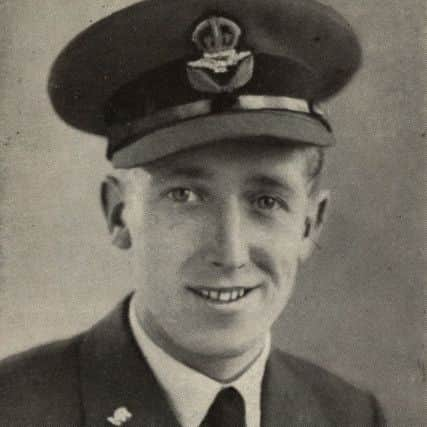Wittering bomb disposal experts help recover crashed Spitfire


Members of 5131 Bomb Disposal Squadron, based at RAF Wittering, today (October 9) helped Oxford Archaeology in the effort to recover Spitfire X4593 from a field near Holme in Cambridgeshire.
On November 22, 1940, Flying Officer Harold Edwin Penketh, from Brighton, took off from RAF Wittering in X4593, a Mark 1A Supermarine Spitfire. The 20 year old pilot died when his aircraft crashed into fields not far from the Cambridgeshire village of Holme.
Advertisement
Hide AdAdvertisement
Hide AdFor the past week Stephen Macaulay from Oxford Archaeology has led the mammoth recovery operation. His highly skilled team has been ably assisted throughout by Royal Air Force Regulars and Reservists, and armed forces veterans from Operation Nightingale.


Op Nightingale is a Ministry of Defence project which assists the rehabilitation and recovery of serving personnel and veterans through archaeology. Many skills learned by personnel are useful in an archaeological setting; Op Nightingale volunteers learn new skills, rebuild their confidence and broaden their social circle.
Members of 5131 Bomb Disposal Squadron had been placed on standby for the duration of the recovery. Crashed military aircraft can carry explosive materials which require careful handling and disposal by trained technicians. Today the squadron went to collect ammunition unearthed from the trench.
The squadron carries sophisticated x-ray equipment to determine the condition of explosive materials. Today, however, in addition to removing the 75 year old ammunition, the Squadron was asked to x-ray a series of finds unearthed from the trench where X4593 is being recovered.
Advertisement
Hide AdAdvertisement
Hide AdAs is often the case with archaeological digs, human skeletal fragments were discovered at the scene and activity was lawfully suspended until the coroner ruled that excavations could resume.
To ensure that Flying Officer Penketh’s remains were treated with the utmost respect, the team from 5131 were asked to x-ray a series of finds to confirm the suspected presence of human remains.
Stephen Macaulay, senior archaeologist, said; “The recovery team in 1940 did everything they could to remove Flying Officer Penketh’s body from the wreckage. Given the condition of the site and the equipment they had available at the time, I think they did very well. It seems apparent, though, that were not able to fully complete the task.
“5131 have helped enormously. In safety terms they’ve removed the ammunition, and I’m grateful for that. Today, with their X-ray equipment, they’ve also helped us preserve the integrity of Flying Officer Penketh’s remains and allowed us to make informed decisions on how to proceed.”
Advertisement
Hide AdAdvertisement
Hide AdGroup Captain Rich Pratley is the station commander at RAF Wittering. He spoke at length about the challenges faced by the recovery team in 1940. He said: “You have to remember that it was the depth of winter, the crash site was flooded and much of the work would have been done by hand. There was a war on, resources were tightly managed and their equipment was very simple compared to today.
“It is fitting that personnel from RAF Wittering should be involved in the recovery effort. Flying Officer Penketh was, after all, one of our own and I am proud that 5131 Bomb Disposal Squadron has made a material contribution to this project.”